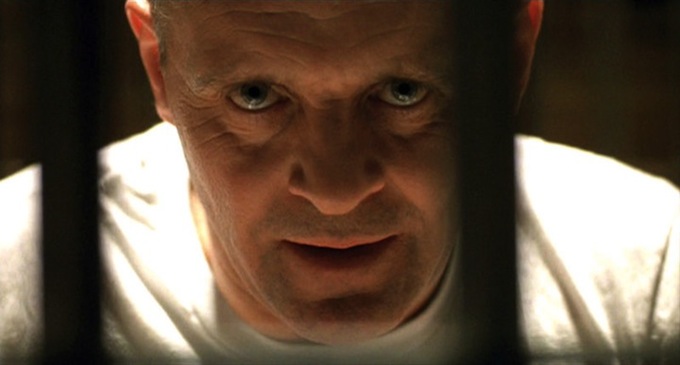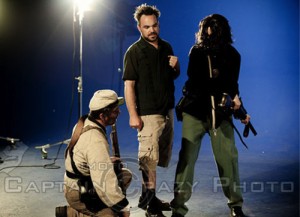 Cinephiles rejoice! Now in its 40th year, the Atlanta Film Festival (ATLFF) is back in bloom from Friday April 1 through Sunday April 10. ATLFF has long been known for a huge line-up of more than 200 diverse and offbeat features, shorts and documentaries from local to international filmmakers, and this year has one of its most exciting line-ups to date with some gems to warm our Retro heart.
Cinephiles rejoice! Now in its 40th year, the Atlanta Film Festival (ATLFF) is back in bloom from Friday April 1 through Sunday April 10. ATLFF has long been known for a huge line-up of more than 200 diverse and offbeat features, shorts and documentaries from local to international filmmakers, and this year has one of its most exciting line-ups to date with some gems to warm our Retro heart.
Because it can be challenging to wade through such a wide-ranging schedule, we’ve taken the time to sort out some productions that you, our Retro readers, might particularly find of interest including a number of cult and classic revival films screening for free. We’ll also be running social media coverage and reviews of some of our favorites, so be sure to check back. And because we can’t mention everything, be sure also to check out the full festival schedule because there are lots more great films you won’t want to miss.
All screenings below are at the festival HQ at the Plaza Theatre, unless otherwise indicated.
 Friday April 1
Friday April 1
Opening night brings a red carpet of stars at the Atlanta premiere of THE FUNDAMENTALS OF CARING directed by Rob Burnett and starring Paul Rudd, but we know our readers will be more ready to get back to the 70s with a rare chance to see Richard Linklater‘s hilarious comedy DAZED AND CONFUSED (1993) at 9:30 p.m., followed by Lips Down on Dixie as they present their extremely popular midnight performance of THE ROCKY HORROR PICTURE SHOW (1975). Although a Plaza staple for years, the show gets even better when seen with a festival crowd of fervent movie fanatics.
 Saturday April 2
Saturday April 2
Things get badass crazy with the world premiere of FRANKENSTEIN CREATED BIKERS (2016) at 9:30 p.m., which kicks off the MORPHINE DREAMS horror/weird series. The homegrown 1970s-style neo-exploitation feature promises to be even more over-the-top than its precursor DEAR GOD! NO! (2011) (Read our Retro Review here). Just about everyone involved with this feature is a dear friend to ATLRetro and lots of the cast and crew will be there, including star Lawrence R. Harvey (HUMAN CENTIPEDE 2 & 3), so we wouldn’t miss it even if we might have to cover our eyes once or twice. Read our Kool Kat of the Week interview with Director James Bickert for a pretaste of the ultraviolent insanity (WARNING: not for everyone!). Just $10 but buy in advance as we betcha it’ll sell out. Facebook event page here.
 Also on Saturday: Get your bizarro horror fix started early at Noon with THE WOOL shorts segment which includes the award-winning GWILLIAM by Kool Kat Brian Lonano and more of what the ATLFF describes as “other-worldly fibers.” 1979 (do we detect a theme here?) is the setting for GOOD OL’ BOY (12:30 p.m.), about the challenges of assimilating into a new culture for a 10-year-old boy who moves with his Indian family to an American small town and has a crush on the girl-next-door.
Also on Saturday: Get your bizarro horror fix started early at Noon with THE WOOL shorts segment which includes the award-winning GWILLIAM by Kool Kat Brian Lonano and more of what the ATLFF describes as “other-worldly fibers.” 1979 (do we detect a theme here?) is the setting for GOOD OL’ BOY (12:30 p.m.), about the challenges of assimilating into a new culture for a 10-year-old boy who moves with his Indian family to an American small town and has a crush on the girl-next-door.  Then EVERYBODY WANTS SOME! (2016), Richard Linklater’s new “spiritual sequel” to DAZED AND CONFUSED set in the world of 1980s college life, screens at 7 p.m. Actors Ryan Guzman, Tyler Hoechlin and Blake Jenner are scheduled to attend. Also at 7 p.m. and free with RSVP at the Hill Auditorium at The High, RUBY IN PARADISE (1993), Ashley Judd‘s film debut as a Florida girl struggling to escape her working class life and achieve her dreams during Pensacola spring break, gets a rare return to the big screen as part of a retrospective of director Victor Nunez‘s career. A PECULIAR NOISE (2015) at 7:30 p.m. (7 Stages), is a sentimental documentary of the DIY underground music scene in the college town that spawned such alt-favorites as The B-52s, R.E.M. and Pylon. Director Jorge Torres-Torres is scheduled to attend.
Then EVERYBODY WANTS SOME! (2016), Richard Linklater’s new “spiritual sequel” to DAZED AND CONFUSED set in the world of 1980s college life, screens at 7 p.m. Actors Ryan Guzman, Tyler Hoechlin and Blake Jenner are scheduled to attend. Also at 7 p.m. and free with RSVP at the Hill Auditorium at The High, RUBY IN PARADISE (1993), Ashley Judd‘s film debut as a Florida girl struggling to escape her working class life and achieve her dreams during Pensacola spring break, gets a rare return to the big screen as part of a retrospective of director Victor Nunez‘s career. A PECULIAR NOISE (2015) at 7:30 p.m. (7 Stages), is a sentimental documentary of the DIY underground music scene in the college town that spawned such alt-favorites as The B-52s, R.E.M. and Pylon. Director Jorge Torres-Torres is scheduled to attend.
 Sunday April 3
Sunday April 3
Festivities kick off at noon with a 25th anniversary screening of Southern foodie comedy classic FRIED GREEN TOMATOES (1991) (free with RSVP). If you’re hungry afterwards, for just $20, there’s a Food on Film after-party at the Callanwolde Fine Arts Center from 2-4:30 p.m. CONCERTO, at 5:15 pm (7 Stages), is a documentary about brothers Christopher Rex (Principal Cellist of the Atlanta Symphony Orchestra since 1979) and Charles Rex (a first violinist with the New York Philharmonic since 1981) who struggle to overcome a childhood at the hands of a disturbed but brilliant composer father. At 6 p.m., head to the Rialto Center for the Arts to revisit the explosive 1991 Clarence Thomas Supreme Court nomination hearings where Anita Hill accused him of sexual harassment in HBO Films’ docu-drama CONFIRMATION, filmed in Atlanta.
 The second installment of the MORPHINE DREAMS series at 7:15 pm at 7 Stages, THE FORBIDDEN WORLD (2015), directed by Guy Maddin and Evan Johnson, is seriously crazed with a side of William Hope Hodgson : “A never-before-seen woodsman mysteriously appears aboard a submarine that’s been trapped deep under water for months with an unstable cargo. As the terrified crew make their way through the corridors of the doomed vessel, they find themselves on a voyage into the origins of their darkest fears.” Then rush back to the Plaza if you like crazy Japanese trippy Weird animated horror for MD#3, Eiichi Yamamoto‘s legendary BELLADONNA OF SADNESS (1973), a real event being that it was previous unreleased in the USA. Based on SATANISM AND WITCHCRAFT by Jules Michelet, young and innocent Jeanne is ravaged by the local lord and makes a pact with the Devil. According to the description: “The Devil appears in phallic forms and, through Jeanne, incites the village into a sexual frenzy. In a new restoration using the original camera negatives, this erotic and psychedelic trip of a film springs to life.”
The second installment of the MORPHINE DREAMS series at 7:15 pm at 7 Stages, THE FORBIDDEN WORLD (2015), directed by Guy Maddin and Evan Johnson, is seriously crazed with a side of William Hope Hodgson : “A never-before-seen woodsman mysteriously appears aboard a submarine that’s been trapped deep under water for months with an unstable cargo. As the terrified crew make their way through the corridors of the doomed vessel, they find themselves on a voyage into the origins of their darkest fears.” Then rush back to the Plaza if you like crazy Japanese trippy Weird animated horror for MD#3, Eiichi Yamamoto‘s legendary BELLADONNA OF SADNESS (1973), a real event being that it was previous unreleased in the USA. Based on SATANISM AND WITCHCRAFT by Jules Michelet, young and innocent Jeanne is ravaged by the local lord and makes a pact with the Devil. According to the description: “The Devil appears in phallic forms and, through Jeanne, incites the village into a sexual frenzy. In a new restoration using the original camera negatives, this erotic and psychedelic trip of a film springs to life.”
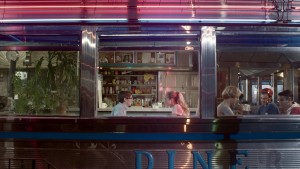
CHEERLEADER
Monday April 4
Get your dose of bubblegum, side ponytails, ’80s music and revenge in the 7 p.m. world premiere of CHEERLEADER, a witty satire of an all-American pastime. Director Irving Franco and Producer Nathan Marcus are scheduled to attend. Then at 9:15 p.m., THE FOUNDERS goes back to the 1950s and the 13 women who fought male chauvinism to found the Ladies Pro Golf Association (LPGA). Co-Directors Charlene Fisk and Carrie Schrader, Producer Phoebe Brown and Actor Caleb Messer are scheduled to attend.
 Tuesday April 5
Tuesday April 5
At 7 p.m., the COTTON documentary shorts series at 7 Stages includes HOTEL CLERMONT, about residents of the notorious seedy and recently closed Atlanta landmark (yes, we said landmark), and THE NEW ORLEANS SAZERAC, about the quintessential Big Easy cocktail. Released first in 2005, HANDMADE PUPPET DREAMS (also 7 Stages, 9:15 p.m.) doesn’t date back to the 20th century in itself, but puppetry is a Retro art, right? This handpicked selection of puppet film shorts has received tons of international acclaim and just looks friggin’ cool, plus it’s introduced by Jim Henson‘s daughter Heather Henson. Read our Kool Kat of the Week interview with her here.
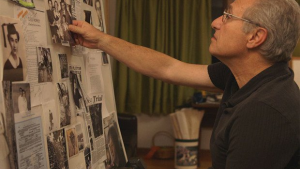
Bill Genovese in WITNESS.
Wednesday April 6
At 7 p.m., THE WITNESS reopens the famous Kitty Genovese murder, which 38 witnesses watched from nearby apartments and did nothing. Forty years later, her brother Bill Genovese, who was 16 at the time of his sister’s death, digs into the case and “uncovers a lie that transformed his life, condemned a city, and defined an era.” Bill Genovese, Director James D. Solomon and Producer Melissa Jacobson are scheduled to attend.
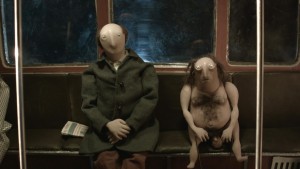
MANOMAN, directed by Simon Cartwright, UK
Thursday April 7
Head to the Center for Puppetry Arts at 7 p.m. for WOOD, a screening of international puppetry shorts, followed by a reception in the Atrium and free entry into the new Worlds of Puppetry Museum featuring the Jim Henson and Global Collections, which includes rare artifacts from Henson-related films such as THE DARK CRYSTAL (1982) and LABYRINTH (1986) and a selfie opportunity with Muppets Kermit and Miss Piggy.
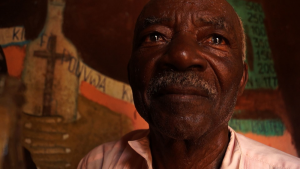
LOA
Friday April 8
During COPPER, a special presentation by the always intriguing Contraband Cinema at 7 Stages at 7 p.m., see contemporary and classic avant garde and experimental shorts with some of the filmmakers in attendance. At 9:15 p.m. also at 7 Stages, director George Koszulinski and other members of his creative team will be on hand for a screening of the “mystical, experimental” Haitian documentary LOA about the life of the Extanta Aoleé, a local houngan or ‘Vodou man.” And ROCKY HORROR PICTURE SHOW screens again at midnight with Lips Down on Dixie audience participation floor show (see Fri. April 1).
 Saturday April 9
Saturday April 9
In HUNKY DORY, at 12:30 p.m., “Sidney—an artist of many things but an extraordinaire of nothing at all—struggles to live up to the expectations of his glam rock dream.” Director Michael Curtis Johnson, Producers Tomas Pais and Jacqueline Johnson and Actor Chad Hartigan (who also directed “closing night feature” MORRIS FROM AMERICA which screens Sat. at 7:30 p.m.) are scheduled to attend. At 2:30, the GOLD documentary shorts series includes SAULTOPAL, in which Atlanta-based artist Susan Cofer invites Georgia-born filmmaker John Henry Summerour (SAHKANAGA) to spend a year documenting Saultopal, an 1100-acre farm in northwest Georgia populated by Longhorn cattle, gigantic rock sculptures and Carl, her husband in his 80th year, and TOURIST about a Vietnam vet revisiting the nation where he once fought.
 Sunday April 10
Sunday April 10
The last day of the ATLFF is pretty Retro-kickass, we have to admit. See David Bowie live again on the big screen as the iconic Goblin King in a 30th anniversary screening of LABYRINTH (1986). Then in the much-anticipated MILES AHEAD at 2:45 p.m., Don Cheadle directs and stars as legendary jazz man Miles Davis. Not a full biopic, it centers on the period of five years in the late 1970s when Davis was holed up in his home with chronic hip pain and a fictional encounter with a music reporter which leads to a quest for a stolen tape of his most recent compositions. There’ll also be some Encore screenings yet to be announced, so keep checking the schedule if you miss a screening and/or it sells out.
Of course, these films represent just a tiny portion of the events, shorts, seminars, screenings and receptions/parties taking place. For a complete list, again you need to check out the official Atlanta Film Festival Schedule. And keep an eye on ATLRetro throughout the fest for coverage on all the fun and films. Enjoy this year’s ATLFF, movie lovers!


